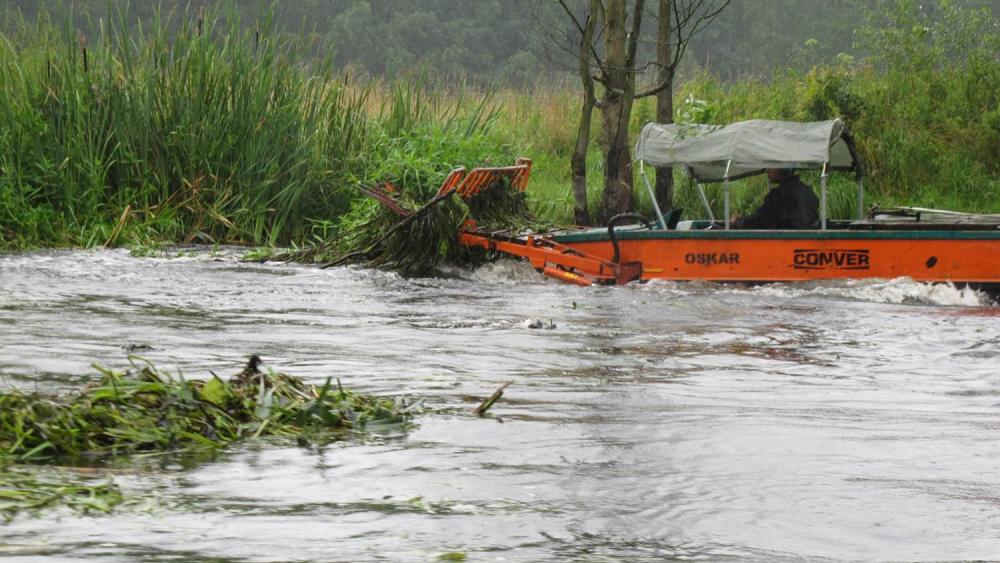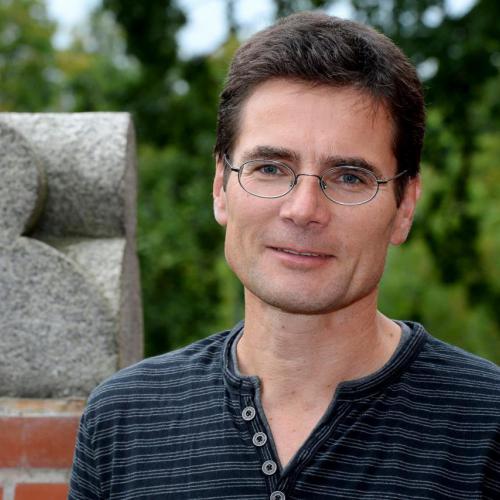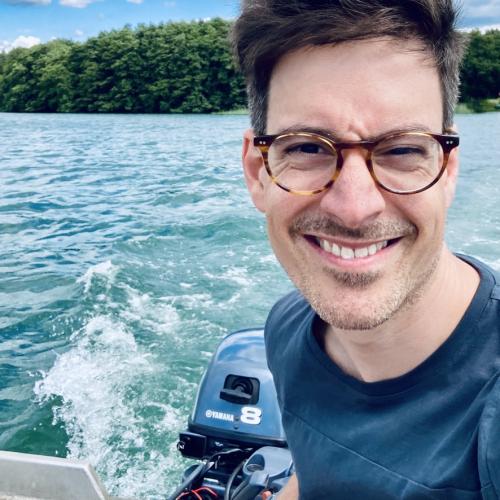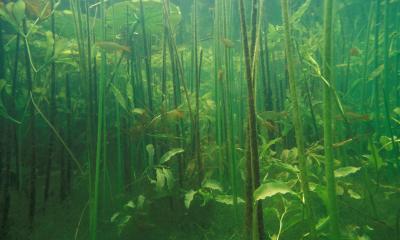MadMacs
Short profile
Duration

Macrophyte removal in the river Spree. | Photo: Jan Köhler/IGB
Submersed and emersed macrophytes are an integral part of most aquatic ecosystems. They influence carbon and nutrient cycles and interact with the other groups of aquatic organisms. Anthropogenic nutrient loading often caused the decline of submersed macrophytes, whereas floating-leaved plants were partly favoured. The recent reduction in nutrient loading enabled the revival of submersed plants, which now often attain very high densities. Such mass developments may impair ecosystem functions, but also water flow or traffic. The present project contributes to our understanding of
- the conditions for mass-developments of aquatic vegetation
- the importance of macrophytes as habitat for algae, zooplankton, benthic invertebrates and fish
- the role of macrophytes in carbon cycling and emission of greenhouse gases
- the importance of macrophyte stands for nutrient retention
- hydraulic effects of aquatic vegetation (impoundment, bank erosion etc)
- public perception of dense macrophyte stands
- management options to reduce the biomass of macrophytes, if a nuisance.
We are doing this by comparing the relevant processes with and without macrophytes, each before and after mowing. We cooperate with main stakeholders like local water authorities and the agencies responsible for landscape management. Together with our project partners, we study rivers and lakes in Germany, France, Norway, South Africa and Brasil. We intend to develop a guidance for the management of lakes and rivers with dense aquatic vegetation.
Water Joint Programming Initiative “Water challenges for a changing world”
German Ministry of Education and Research (BMBF)




